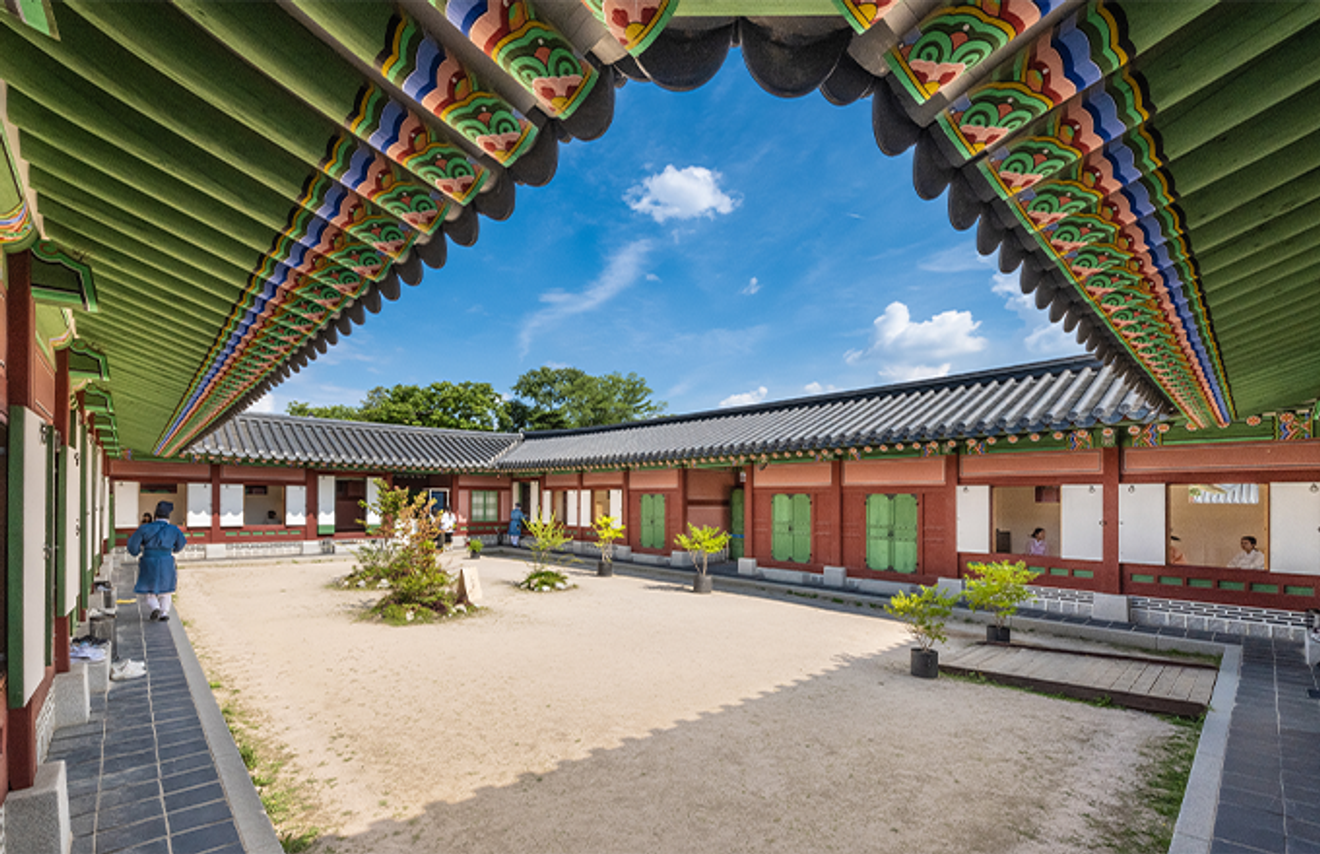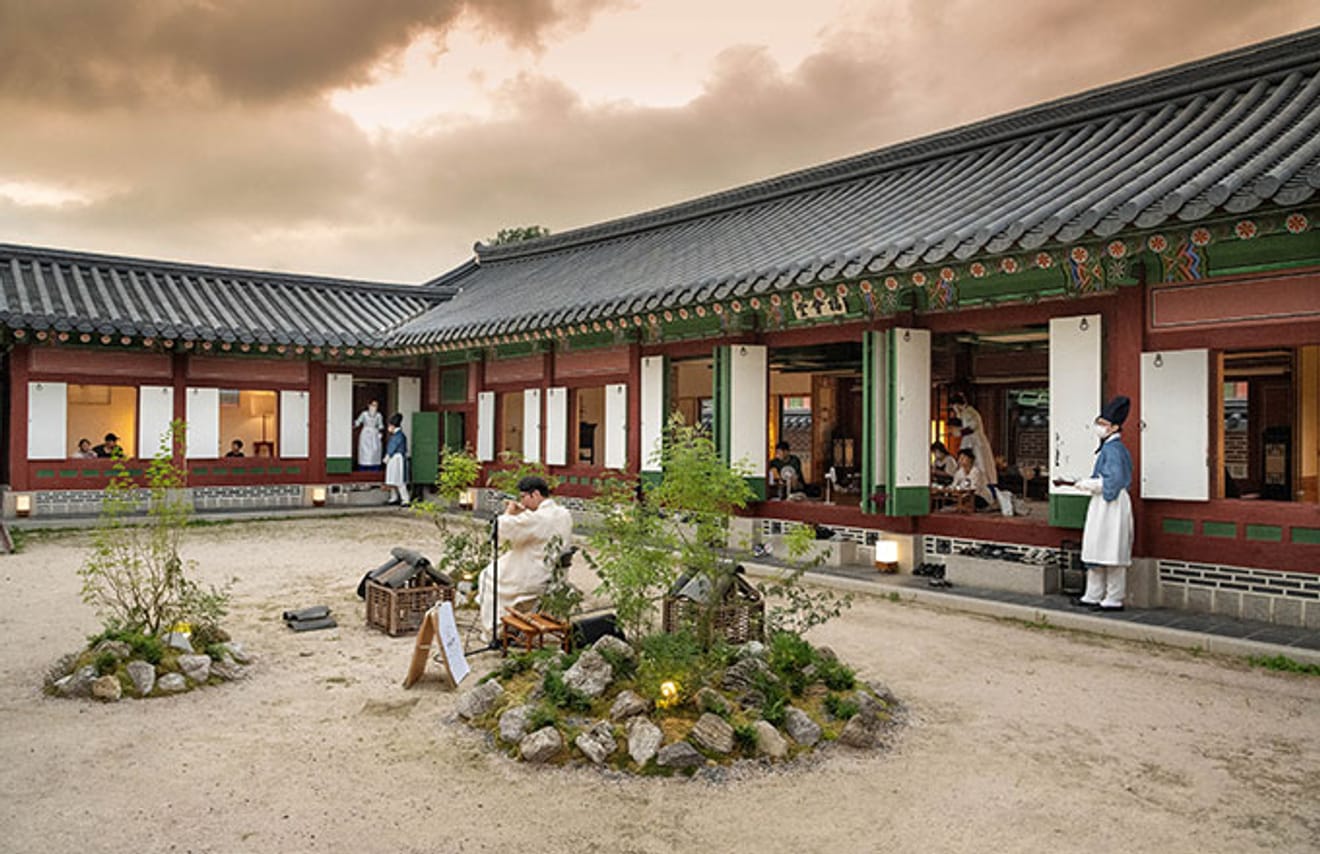Subject
- #Royal Confectionery Experience Event
- #Royal Confectionery
- #Restaurant Recommendation
- #Saenggwa Bang
- #Gyeongbokgung Palace
Created: 2024-01-31
Created: 2024-01-31 09:03
Hello! In the previous post, I introduced the Gogojae Palace Tea Ceremony offered by the Korea Cultural Heritage Foundation. This time, I hear that you can also enjoy palace tea ceremonies at Gyeongbokgung Palace. It's an annual event, but it's only held during a specific period, so it's not currently operating. However, it's about to start soon, so I'd like to introduce it to you.
First, let me tell you about Saenggwabang. Located in the Sojubang building of Gyeongbokgung Palace, 'Saenggwabang' is one of the six departments (Yukcheoso: six departments in charge of the royal household during the Joseon Dynasty; including the Chim-bang, Subang, Sesugan, Sojubang, Sedapbang, and Saenggwabang) and was where the 'King and Queen's' desserts and special dishes were prepared. It was also called 'Saengmulbang' or 'Saenggeotbang'. The Gyeongbokgung Saenggwabang program is a paid experience program designed to allow you to enjoy the palace snacks and palace medicinal teas that the King actually ate, based on the contents of the Joseon Wangjo Sillok (Annals of the Joseon Dynasty), even today. Apparently, this event started in 2016 when the Korea Cultural Heritage Foundation created a special experience event for a small number of people to enjoy palace snacks and medicinal tea.

Source: Korea Cultural Heritage Foundation
The event period is held twice a year, in the first and second half of the year, and since it has a fixed period, it is not operated every day. It is mainly held during the spring or autumn when the weather is nice. Operating hours are from 10:00 to 16:40.

Source: Korea Cultural Heritage Foundation
Next, I will explain how to participate.
① First, access the online ticket booking site (Ticketlink). → ② Select the date, session, and set (medicinal tea is selected on-site) and pay (by card). → ③ [On-site] Receive the tea ticket after selecting the palace medicinal tea at the information desk. → ④ Seat guidance and assignment. → ⑤ Exchange the palace snack set for the tea ticket. → ⑥ You can then enjoy the palace snack and tea.
※ The Gyeongbokgung Saenggwabang program is also available only after applying online, so you must purchase tickets through the designated link within the specified period and time.

Source: Korea Cultural Heritage Foundation
The interior of Saenggwabang is decorated like this. Since Saenggwabang also requires seat reservations, it is divided into sessions. It is a seated position, and snacks are served on a small low table. Isn't the interior traditional and full of Korean beauty?

Source: Korea Cultural Heritage Foundation
Initially, it was easy to enter the program, but it has become so popular on SNS that the term 'gung-keting (gung + ticketing)' has emerged, and the competition for reservations has become fierce. I also tried ticket booking in the second half of last year, but due to the enormous number of people waiting, I had no choice but to fail repeatedly.
Most of the visitors to Saenggwabang are women in their 20s and 30s, and it is said that they have created a trend of wearing hanbok and taking photos near the palace. I believe the reason for Saenggwabang's popularity is due to its authenticity, based on the Joseon Wangjo Sillok, the palace snacks that are not available at regular cafes, and the unique service provided by staff who play the role of palace maids, allowing visitors to experience what it's like to be a king or queen, which adds to its charm.
Now, let's introduce the menu. It's divided into two main sets: the Chodujeomjeungbyeong Set and the Juak Set. The difference lies in the composition of the snacks, it seems.
First, there's the Chodujeomjeungbyeong Set. Priced at 15,000 won, it's the signature menu. The Chodujeomjeungbyeong Set includes Gaeseong Yakgwa, Chamwuijeonggwa, Jatbaksan, Maeyeopgwa, and Gotgamdanji.

Source: Korea Cultural Heritage Foundation
Chodujeomjeungbyeong's 'Chodu' means 'roasted red beans'. It's a type of rice cake made with glutinous rice flour, chestnuts, jujubes, and pine nuts, steamed in a steamer with red bean powder. Interestingly, the word 'Yakgwa' means medicinal confectionery. Jatbaksan is a type of rice cracker made with pine nuts mixed with honey or malt and shaped into a rectangle. Chamwuijeonggwa is a traditional confectionery made by soaking or simmering fruits with a unique aroma in honey or sugar.

Source: Korea Cultural Heritage Foundation
Maeyeopgwa means 'a type of confectionery that resembles a sparrow perched on a plum blossom tree'. It's made by cutting slits into wheat flour and deep-frying it. Gotgamdanji is a confectionery where walnuts, dried persimmons, and pine nuts are chopped and mixed with citron marmalade, and the filling is put inside.
When you first hear the names, they may sound unfamiliar, but once you understand their meaning, don't they sound delicious?
Next is the Juak Set. Priced at 12,000 won, it includes Juak, Salyeotgangjeong, Maeyeopgwa, Geumgyuljeonggwa, Sagajeonggwa, and Gotgamdanji.

Source: Korea Cultural Heritage Foundation
This is the Palace Medicinal Tea. When you choose the Chodujeomjeungbyeong Set or the Juak Set, you can choose from a variety of palace medicinal teas.

Source: Korea Cultural Heritage Foundation
There are Gyeongokdaem (signature menu), Samgyulda (ginseng, tangerine peel, jujube), Gamgukda (chrysanthemum, goji berry), Damgangda (ginger, honey), Omizada (schizandra), and Jehotang (ginseng, tangerine peel, jujube).
I'd love to try the Gyeongokgo, a precious medicine like jade.
Here are the directions. By subway, it takes about 10 minutes on foot from Exit 1 of Anguk Station on Line 3. If you're using Line 5, it's about 10 minutes on foot from Exit 2 of Gwanghwamun Station. From Exit 4 of Gyeongbokgung Station on Line 3, it takes about 12 minutes on foot.
By bus, get off at the Beomryeon-sa bus stop on Route 11 in Jongno and walk to the destination. For parking, you can use the Gyeongbokgung East Side Paid Parking Lot (parking fees are at your own expense).
For inquiries related to the event, please call the Palace Utilization Program Call Center at 1522-2295.
※ The event period may change depending on future circumstances.
※ Detailed information about this event (event schedule, booking instructions, etc.) will be available in the [Event Schedule] menu later.
※ Other information about the event (cancellation due to rain, etc.) can be found in the [Important Notices] menu.
This concludes the introduction to the Saenggwabang program, where you can enjoy palace snacks at Gyeongbokgung Palace.
Comments0